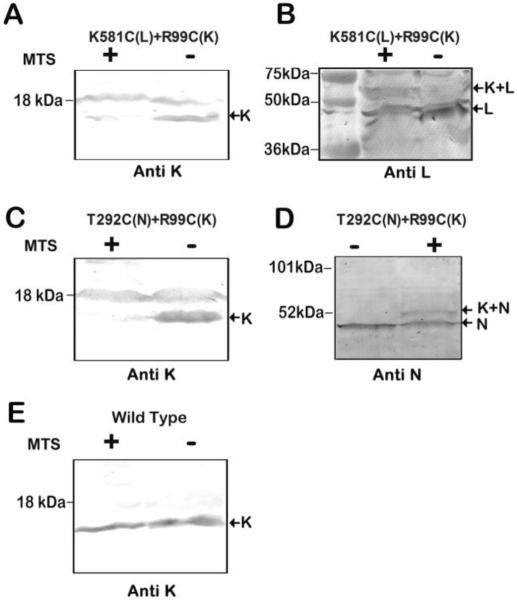Fig. 4.
Cross-linking results of mutants K581C (nuoL) + R99C (nuoK) and T292C (nuoN) + R99C (nuoK). (A, B) Representative immunoblots of membrane samples from K581C (nuoL) + R99C (nuoK) are shown, with and without treatment with M3M to promote cross-link formation. The cross-link between subunit L and K was generated by the MTS reagent M3M. In panel A antibody against K was used, and with MTS treatment, the band largely disappears. The 18 kDa band is an artifact. No cross-linked product was visible. In panel B antibody against L (nuoL-1) was used, and upon MTS treatment the L band diminishes, and a new, larger MW band appears, indicated by the arrow, K+L. (C, D) Representative immunoblots of membrane samples from T292C (nuoN) + R99C (nuoK) are shown, with and without treatment with the MTS reagent M6M to promote cross-link formation. In panel C antibody against K was used, and upon MTS treatment, the band for K disappears, but no cross-linked product was seen. The 18 kDa band is an artifact. In panel D antibody against N (HA epitope) was used, and upon MTS treatment, the band for N diminishes and a larger MW band appears, indicated by the arrow K+N. (E) Immunoblot of membrane samples from wild type is shown, with and without treatment with MTS reagent M3M. The antibody used was against subunit K.

